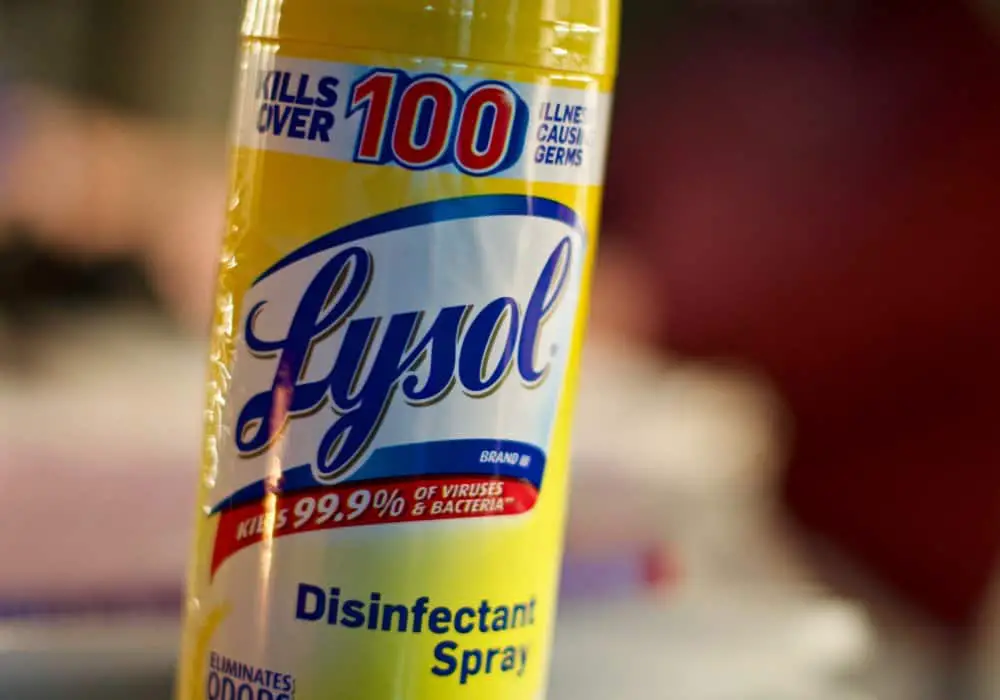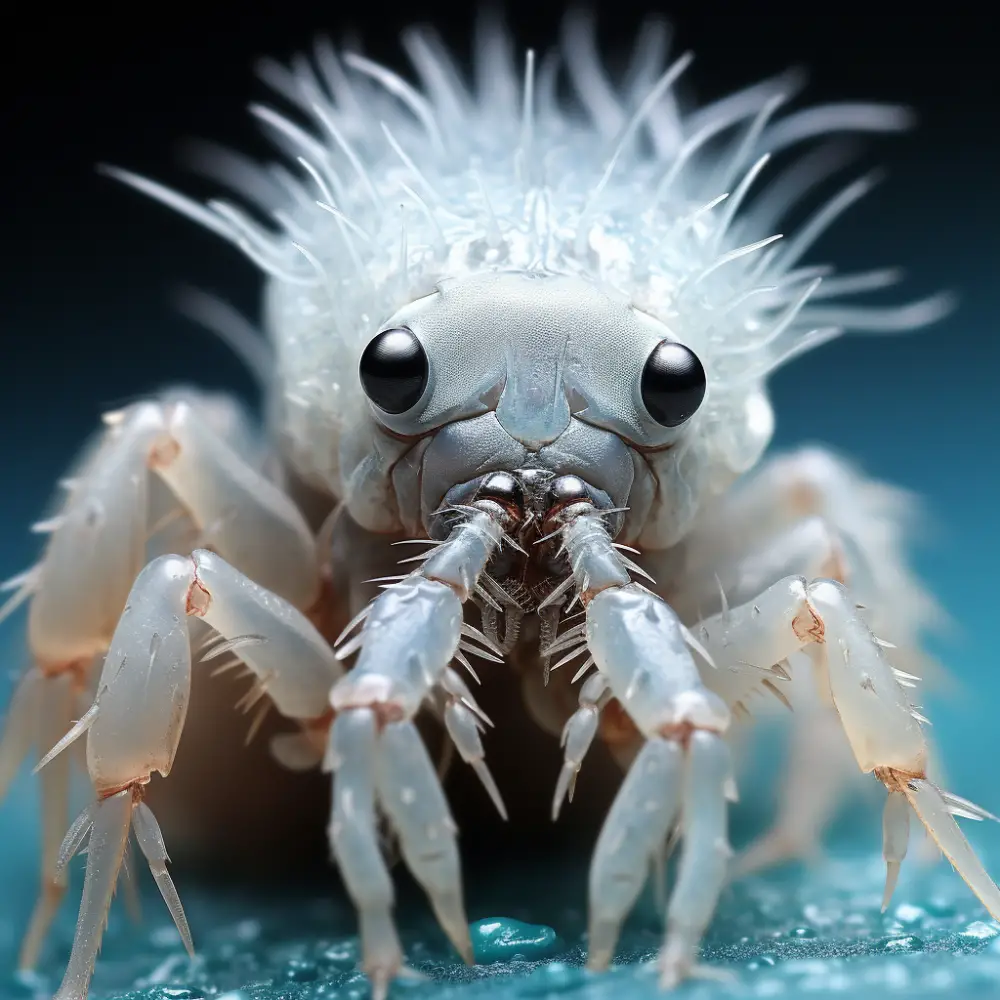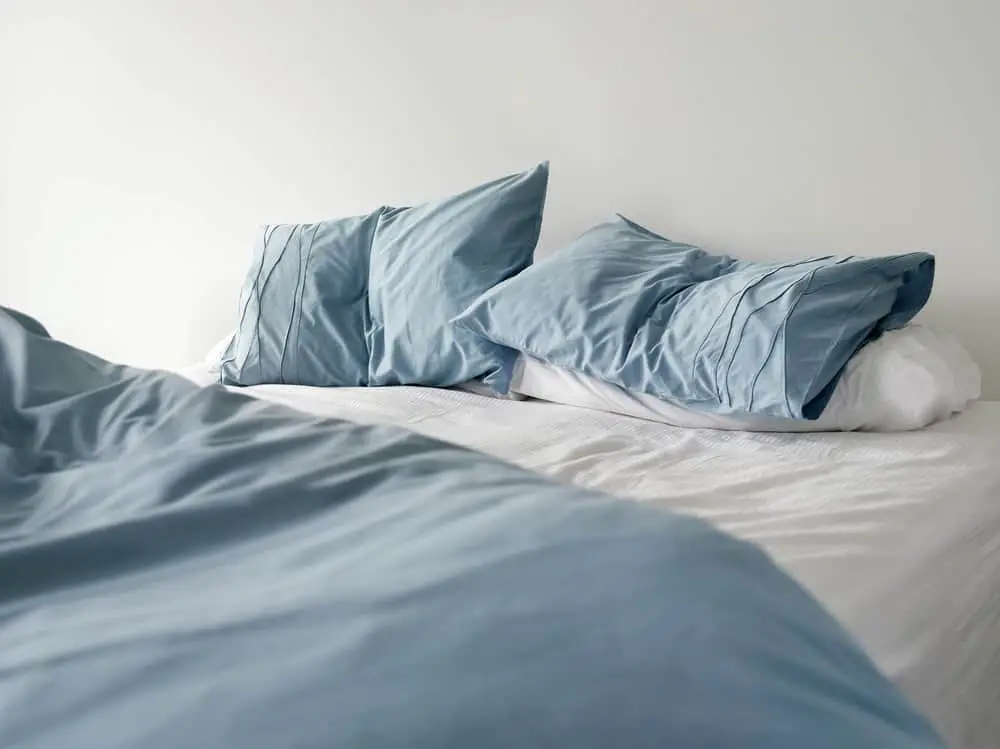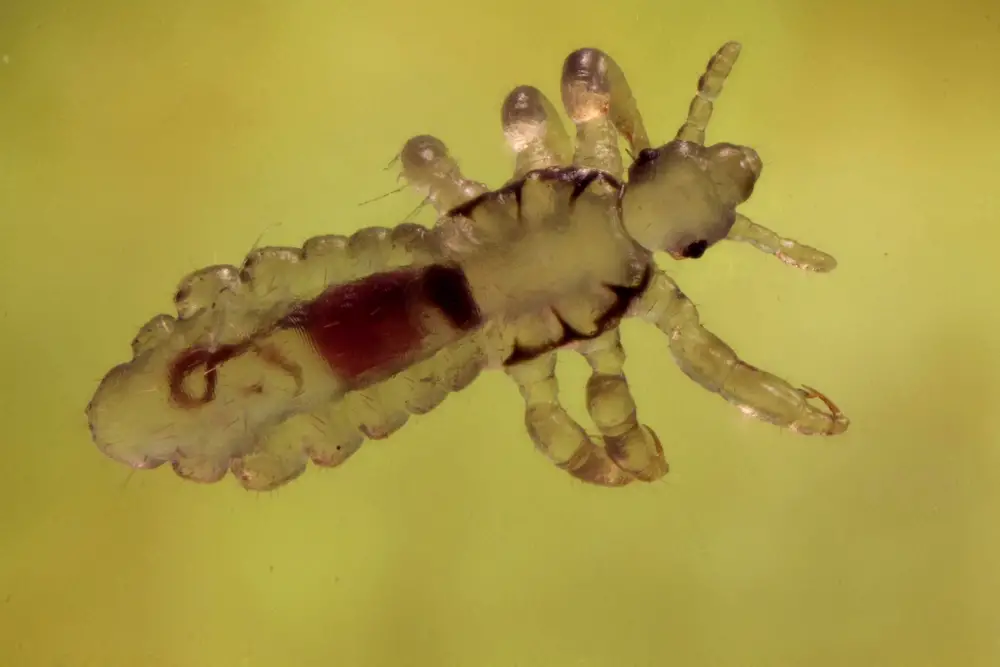Imagine settling down for a cozy evening at home, only to discover that you’re sharing your space with unwanted guests: lice.
These tiny, itchy invaders can send any homeowner into a panic, especially when they’re not just on scalps but also on furniture. The immediate urge? To reach for the most potent disinfectant around, often Lysol.
But is this popular spray really the knight in shining armor in your battle against lice?
While Lysol promises to kill 99.9% of viruses and bacteria, how does it fare against pests that have made your sofa their new residence?
Quick Answer:
Lysol spray is not specifically designed to kill lice on furniture. While it may kill some lice due to its disinfectant properties, it’s not a reliable or recommended method for treating lice infestations. For effective lice treatment on furniture, it’s best to vacuum thoroughly and use specialized lice treatment sprays or products.
In this blog post, we’ll dive into the efficacy of Lysol against lice on furniture.
Understanding Lice Infestation
When dealing with a lice infestation, it’s essential to understand the behavior and life cycle of these pests. Lice are small, wingless insects that feed on human blood.
There are several types of lice, but head lice are the most common, and they thrive on the scalp.
Head lice infestations can occur when lice eggs, or nits, are laid by female lice near the base of hair follicles. These nits are oval, about the size of a pinhead, and are firmly attached to hair strands.
After about a week, the nits hatch into nymphs, which grow into adult lice in 10 days.
The adult lice can then lay more eggs, leading to a repeating cycle of infestation. When lice are spotted on furniture or other household items, it’s crucial to act swiftly to prevent the infestation from growing.
Adult lice can survive for about 48 hours away from the human scalp, while nits can survive for up to a week.
If adult lice or nits are found on furniture, it’s essential to take the proper steps to tackle the issue. Lysol spray may be used as a supplementary tool for controlling lice infestation, but it’s important to know that it might not be the most effective method.
Instead, thorough cleaning and vacuuming of your furniture and other household items, following the instructions provided by healthcare experts, will ensure the best results.
The Efficacy of Lysol Spray Against Lice

When dealing with a lice infestation in your home, you may wonder whether Lysol spray can effectively kill lice on furniture.
Lysol spray is a well-known disinfectant that can eliminate various germs, but its effectiveness against lice is a topic worth exploring.
Lysol spray contains various chemicals, including ethanol, carbon dioxide, and alkyl dimethyl benzyl ammonium saccharinate, known for their strong antimicrobial properties. These chemicals contribute to the spray’s ability to disinfect a wide range of surfaces and kill various bacteria and viruses.
However, lice are a type of parasite and may not be as susceptible to these chemicals as other microbes.
While Lysol spray might not be specifically marketed as a lice spray, it can still help to some extent, control lice infestations on furniture. For example, using Lysol spray on surfaces like couches or chairs can help disinfect the area and reduce the likelihood of lice re-infesting these surfaces after treatment.
However, it is essential to remember that Lysol spray is not intended to be used on fabrics, such as clothing, bedding, or plush toys, due to the chemicals’ potent nature, which could damage these materials.
In these cases, washing the items in hot water, drying them on high heat, or sealing them in a plastic bag for a couple of weeks can be effective.
To handle lice on furniture more directly, there are specialized lice sprays available on the market that target lice, nits, and their eggs specifically.
These sprays often contain chemicals like pyrethrins or permethrin, which are more effective against lice.
Proper Technique for Using Lysol Spray
To effectively use Lysol spray on furniture for lice, follow these steps:
- Prepare the area: First, ensure the room is well-ventilated and remove any unnecessary clutter from the furniture. This allows the Lysol spray to reach all surfaces where lice may hide.
- Shake the can: Before spraying, shake the Lysol can well to ensure the contents are properly mixed.
- Apply the spray: Hold the can about 6 to 8 inches from the furniture’s surface. Spray a light, even coat, on all areas of the furniture where lice or their eggs may be present. Pay special attention to seams, crevices, and other hard-to-reach areas.
- Allow it to dry: Wait for the Lysol spray to air-dry completely. Avoid touching the furniture until the surface is completely dry to ensure maximum effectiveness.
- Repeat as needed: Depending on the severity of the infestation, it may be necessary to repeat the process more than once. Monitor the situation and reapply the Lysol spray as needed, following the same technique.
Please note that Lysol spray may not effectively kill lice and their eggs. It is essential to use Lysol spray with other methods, such as vacuuming, washing, and drying, to remove all lice and nits from your living area.
Additionally, consult a healthcare professional if the infestation persists.
Other Over-the-Counter Lice Spray Options
In addition to Lysol, there are several over-the-counter lice spray options that can help you tackle lice on furniture. Some options may be more effective than Lysol, specifically designed to target lice.
Nix Ultra Lice & Egg Removal Spray is an option that has been well-regarded for its effectiveness in killing lice and their eggs. This spray can be applied directly to furniture and will eliminate lingering lice.
- Nix Ultra Lice Removal Kit kills head lice, eggs (nits), superlice, and bedbugs in one convenient kit
- Nix Ultra Lice Removal Kit contains a lice treatment for hair and your home in one box; including Nix Ultra Lice Treatment hair solution, Nix Ultra lice removal comb and Nix lice and bedbug killing…
- Nix Ultra Lice Treatment Hair Solution kills head lice and eggs (nits), including hard-to-kill superlice
Remember to follow the instructions provided on the label for the best results.
Another option to consider is Rid Home Lice Spray. This spray is an easy-to-use formula that can be applied to various surfaces, including furniture, to kill lice and their eggs. Like with Nix Ultra, follow the directions on the bottle to ensure the most effective treatment.
- Trusted Brand : RID is trusted by families for killing lice and lice eggs. This permethrin lice killing spray also kills bedbugs and dust mites.
- KILLS LICE AND THEIR EGGS: RID Home Lice, Bed Bug & Dust Mite Spray kills lice and their eggs on mattresses, furniture, car interiors, and other non-washable items.
- EFFECTIVE AGAINST BEDBUGS AND DUST MITES: RID Home Lice, Bed Bug & Dust Mite Spray is also effective at killing bedbugs and dust mites on non-washable items.
Home remedies, such as a mixture of water and white vinegar, can also be used to treat lice on furniture. Fill a spray bottle with equal water and vinegar, then apply the solution to the affected areas.
Leave the mixture on the furniture for at least 30 minutes before wiping it off. This method may not be as effective as over-the-counter lice sprays, but it can be a more cost-effective and natural alternative.
Remember that while treating your furniture is essential, it is also crucial to tackle the lice infestation on the affected individual.
Utilize over-the-counter lice treatments, such as Nix or Rid lice removal kits, to ensure you and your family are lice-free. Properly following the treatment process and washing all fabric items that may have come into contact with lice will help prevent reinfestation.
Alternative Methods for Treating Lice on Furniture

In addition to Lysol spray, you can try several natural, homemade treatments to help remove lice on your furniture.
These methods are cost-effective and easy to implement. Be sure to test each solution on a small, inconspicuous area of your furniture to ensure it won’t damage the material.
One simple method is using vinegar, specifically apple cider vinegar. To create your homemade lice spray, mix equal parts water and apple cider vinegar in a spray bottle.
Generously spray the mixture onto the affected furniture, ensuring all surfaces are covered. Allow it to sit for a few hours, then vacuum or wipe clean. The acidic nature of vinegar helps to break down the lice and their eggs.
Rubbing alcohol may also be an effective option for treating lice on furniture. Mix one part rubbing alcohol with two parts water in a spray bottle, and apply it to the affected areas in the same way as the vinegar solution.
Rubbing alcohol has a drying effect on lice, making it difficult for them to survive.
Essential oils, such as tea tree oil, can be powerful allies in your fight against lice. Some essential oils have qualities that help to repel and kill lice.
To create your own essential oil lice spray, mix 15-20 drops of tea tree oil with one cup of water in a spray bottle. Apply the mixture to the infested furniture, and let it sit for a couple of hours before vacuuming or wiping clean.
Proper Cleaning and Disinfection of Furniture
When dealing with lice on furniture, it is essential to clean and disinfect all surfaces thoroughly. Lysol spray can be an effective tool in this process, but it’s important to take additional steps to ensure the lice are fully eliminated.
Follow these guidelines for proper cleaning and disinfection of your furniture.
First, vacuum your furniture thoroughly to remove any visible lice, eggs, or nits. Pay special attention to crevices and seams on upholstered or leather couches, as lice can often hide in these areas.
Remember to also vacuum any surrounding rugs or carpets to remove any stray insects.
Next, wipe down all hard surfaces of your furniture, including leather and vinyl leather, with a mix of hot water and bleach. Use a ratio of one part bleach to nine parts water to create a disinfecting solution.
Wear gloves while handling bleach, and test the solution on a small, inconspicuous area of your furniture before applying it more broadly.
If your furniture is upholstered or has fabric surfaces, it’s time to bring out the steam cleaner. Steam cleaning is effective at disinfecting and killing lice due to the high temperature of the steam.
Be sure to follow the manufacturer’s instructions when using your steam cleaner, and make sure the steam reaches all possible hiding places for lice on your couch or other upholstered furniture.
If you don’t own a steam cleaner, you can also use a wet cloth with hot water to wipe down fabric surfaces, but the efficacy of this method might be lower.
After cleaning and disinfecting your furniture, it’s essential to maintain a clean environment by frequently vacuuming and dusting. Regularly inspect your furniture for any signs of lice to catch and address any issues early on.
Handling Bedding and Mattresses

When dealing with a lice infestation, it is important to address the issue on your bedding and mattresses.
Begin by stripping your bed of all linens, including sheets, pillowcases, blankets, and throws. It is essential to wash these items properly to ensure that no lice or nits remain.
For washable items, launder them in your washing machine using the hottest water temperature the fabric can handle, usually around 130°F (54°C). This high heat will help kill any remaining lice or nits.
After washing, place the items in the dryer on the hottest setting for at least 20 minutes. The combination of heat and tumbling will effectively eliminate the infestation.
For non-washable items like pillows or large blankets, consider taking them to a professional dry cleaner. Dry cleaning uses high heat and chemical solvents to clean delicate fabrics and will also kill lice.
If dry cleaning is not an option, you can seal non-washable items in an airtight plastic bag for 2 weeks, which will suffocate the lice and nits.
Now, let us turn our attention to your mattress. While lice do not typically survive long on inanimate surfaces, it is still a good idea to thoroughly vacuum your mattress to remove stray lice, nits, or debris.
Using the upholstery attachment, go over the entire surface, paying special attention to seams and crevices. Also, vacuuming and using a mattress encasement cover or protector will keep your mattress clean and lice-free.
Prevention and Management of Lice in the Home Environment
To prevent lice infestation in your home, it is important to understand the appropriate measures for lice removal and treatment. Firstly, focus on personal hygiene and regularly washing your hair.
Teach your children to avoid sharing combs, brushes, headphones, hats, and other personal items that come in close contact with the hair.
When there is a lice outbreak at school or within the family, use a lice checklist to ensure you have covered all the necessary steps for lice management. Regularly inspect your family’s heads for lice and nits, using a fine-toothed comb to screen each family member’s hair thoroughly.
If you detect lice or nits, opt for over-the-counter kits that contain effective lice treatment solutions. These usually include a special shampoo and a fine-toothed comb for removing lice and nits.
Follow the instructions on the package to achieve the best results.
Be mindful of “super lice,” which are resistant to most traditional treatments. If over-the-counter kits are not working, seek advice from a healthcare professional to determine the best course of action for lice removal.
As for home environment management, regularly vacuum your furniture, carpets, and car interiors to remove any lice that might have fallen off a person’s head.
Wash bedding, clothing, and other personal items in hot water (at least 130°F) and dry them on high heat. Non-washable items should be sealed in a plastic bag and stored for two weeks.




